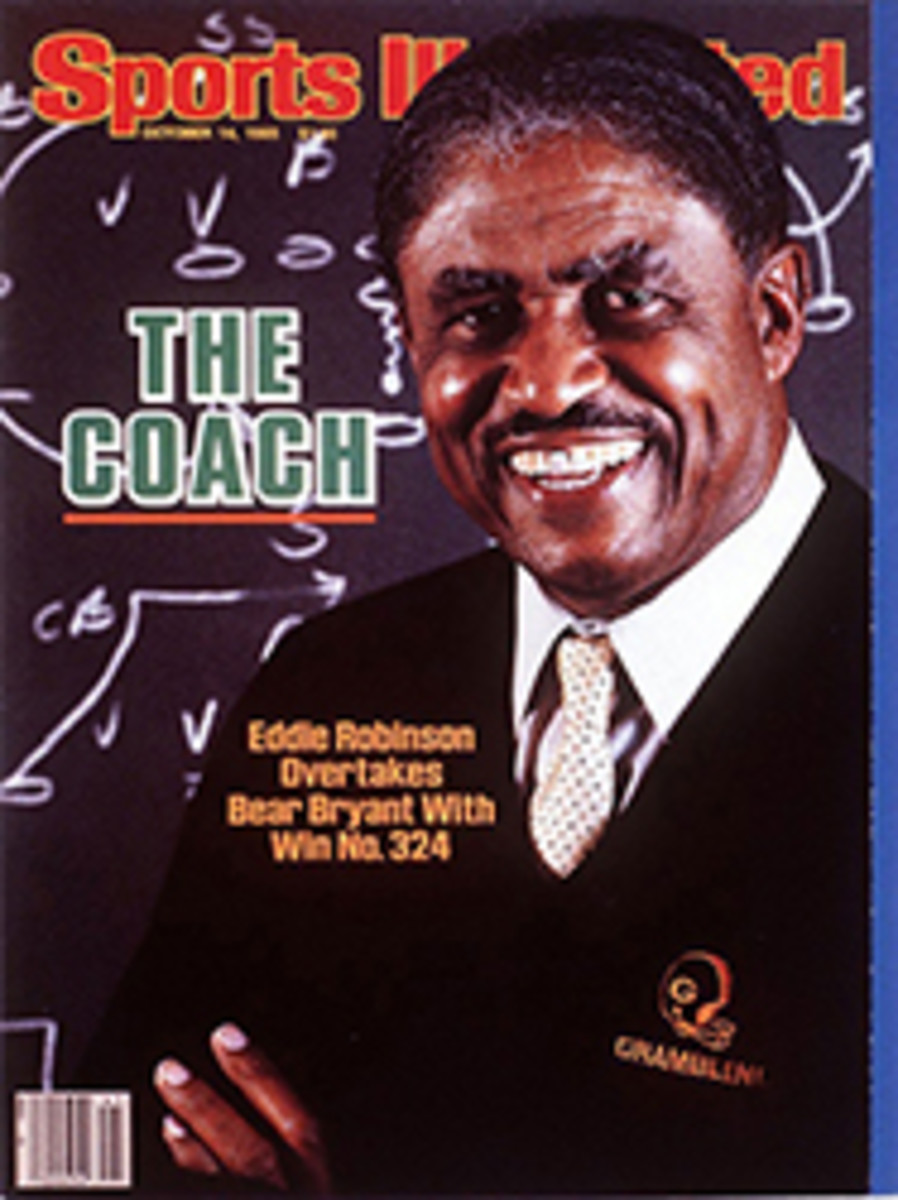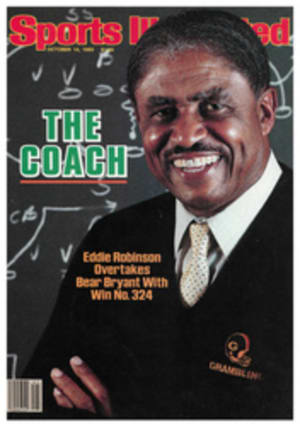
A VISIT TO AN OLD PLAYGROUND BRINGS BACK MEMORIES OF WINS—AND LOSSES
Last winter when we visited Minnesota, I took my 2½-year-old daughter, Eliza, to see the playground and outdoor hockey rink that I used to play on. The old boxcar warming house had been replaced by a glazed brick recreation center, and the rink itself had yielded to a couple of all-weather tennis courts, but just standing on that frozen ground brought back to me a special feeling. Perhaps it was the company. I was about my daughter's age when I began trailing my big brother to the playground.
I grew up in his shadow, and a long, protective shadow it was. Dean was tall, lanky—or so I remember him—and by every account a great athlete. He could throw perfect spirals, hit the hide off a baseball and slap a puck in the air the length of the ice. Though he lived barely 13 years, he's still talked about as the best hockey player Desnoyer Park ever produced.
Desnoyer Park is a small, triangular section of St. Paul on the cusp of Minneapolis, bordered by the Mississippi River, a golf course and Interstate 94. As anyone who has ever lived in Minnesota knows, the only way parents keep from going crazy during the hard winters is by shoving their kids outdoors. While I was growing up, the hub of athletic activity in this mostly working-class neighborhood was the Desnoyer Park playground, a partially wooded acre where each winter the pavement was flooded to produce two rinks—one for hockey and the other for general skating.
Desnoyer Park and its Improvement Association could afford jerseys only for the Bantam team (age 8 to 10). The Pee Wees (age 11 to 14) just showed up at games wearing roughly the same colors. At the end of each season parents bought their kids a Desnoyer Park "letter" jacket, if the kid didn't already have one. My brother had had one for as long as I could recall, and for a couple of months in 1958 he wore it every day while teaching me how to lift a puck in our basement.
Dean had the idea that I, at the age of six, was ready to master the wrist shot, the sweep shot and the backhand. From the moment I had laced up my sister's hand-me-down skates at age three, skating had come as naturally to me as walking. I also possessed something that rink rats call "hockey sense," which eventually led to my being elected captain of my high school team and earned me the dubious distinction of twice being the ECAC Sophomore of the Week at Williams College. But at six, I was small for my age—fast, but small—with puny wrists and forearms. I could barely stick-handle the puck, much less maneuver that long piece of ash to lift it.
When the warming house closed in late February, my brother took me into the basement to teach me how to shoot. First, he lopped about 18 inches off the shaft of my Northland stick, so that it reached just under my chin. Then he gave me a wrist-strengthening program. He nailed a length of clothesline to the piece of severed stick shaft and tied a rock to the clothesline. For 10 minutes each day I held the stick at arm's length, twisting it so that the rope coiled around it, lifting the rock off the floor.
For a boy of 12, Dean's tutoring was pretty sophisticated. He drew a hockey net on the wall, with windows to the upper and lower corners. Anyone could flick a shot up high, he counseled, and the goalie had a much better chance of stopping a high shot. The best shot was low and hard, just a couple of inches off the ice. He demonstrated a sweep shot, drawing the puck way behind him, the blade of the stick cradling the puck at about a 45-degree angle to the ice, his weight on the opposite foot. Then he swept the puck forward, drawing power from his twisting torso, and flicked his wrists just as the puck left the stick.
It took about a month before I had the strength to begin mastering his techniques. But soon I was getting the puck off the basement floor, however weakly, and hitting the lower windows of the goal. Then Dean taught me the backhand, a far easier shot. It was a lot like tossing a shovelful of snow, something I'd had plenty of experience doing. The wrist shot was like the sweep shot, without the sweep.
For the rest of that winter and early into the spring, Dean and I went to the basement every morning to practice our shots. For the first 10 minutes I did the wrist-building exercises while he zinged 40 or 50 shots against the wall. Then, using a steel brush, he erased the black marks left by the puck, and I started shooting.
In April Dean got sick—a cold that wouldn't go away. He lost his appetite, his strength and his color. Blood tests showed a wildly high white cell count. It meant only one thing, leukemia, the kind that now can often be cured. By the end of the summer of 1958 he was dead.
He spent the final month of his life in an oxygen tent in the den. I wasn't allowed to visit him.
In some respects, I'm grateful for that: The image of Dean that I'll always carry with me is that of a curly-haired kid, stronger and taller than most, who watched out for his little brother.
After he died, I continued to go to the basement each day and practice my shots. I was just seven and I couldn't fully comprehend his death. I talked to him before going to sleep as though he still occupied the bunk bed above me, told him how I could now hit the corners with my eyes closed. I figured he would come back, somehow.
In late October, the Parks and Recreation crew arrived at the playground to ready the rinks. There was talk that, because of a dearth of eligible kids, Desnoyer Park wouldn't be able to put together a Bantam team that year. The coach, who had given my parents Dean's hockey jersey—the Bantam equivalent of retiring his number—asked me if I would play. By the rules, I was two years too young, he said, but if I were willing to try out, the coach was willing to bend the rules.
I wanted nothing more than to play with the big kids. But I caught a cold and lost my voice. I recovered from the cold, but my voice didn't. My worried parents sent me to the doctors for a series of tests. An otolaryngologist thought that one of my vocal cords was partially paralyzed, perhaps from a mild case of polio. What seems more likely to me now, and was recently confirmed by my doctor, is that I had had a delayed psychological reaction to Dean's death, maybe after being told continually to keep quiet lest I disturb him.
Still voiceless in December, I tried out for the team. But my lift shots had gone the way of my voice. And shooting on hard, fast, outdoor ice was far different from shooting off of a concrete floor. When I drew the puck back, it would slide off my stick. I would flick my wrists, now as strong as a 10-year-old's, but the puck would dribble away. My timing was terrible. Still, I could deke the goalie five times out of six, so I made the team.
My diminutive presence wasn't readily accepted by some of my larger teammates. On the ice I was able to get around the bullies using speed and finesse, which irritated them more. Off the ice, I was pushed into snow banks, had my skates stolen and was taunted as a sympathy case. I couldn't even lift, they said.
By late December, we were ready to play our first game, against South St. Anthony. I was to center the third line, displacing a kid five years my senior. After the warmup, we all stepped over the boards and into the snowbank that was our bench. While going over the boards, the stick of the kid I had displaced struck me flush in the nose, breaking it. I spent the next four hours in the hospital emergency room.
The next week, with two black eyes, a nose the size of an orange and still voiceless, I was again installed as center on the third line. This time we were to play Linwood Park, one of the best neighborhoods in St. Paul. That team had complete uniforms, and some of its skaters had intimidating emblems on their jerseys that read: TORONTO MAPLE LEAFS' HOCKEY SCHOOL.
We played 12-minute running-time periods, with two breaks to shovel the ice. Some 30 minutes into the game, the score was tied 2-2, though Desnoyer Park was lucky to be in the game. Our coach believed in a straight rotation, so with a couple minutes left to play, the third line took the ice. We faced off in Linwood's zone to the left of the goalie. I got the puck back to my leftwinger in the slot, who whiffed on a shot. I skated out toward the blue line to retrieve the puck, turned and shot. The puck took off on a wobbly flight toward the goal, first passing through a defender's legs, then rising as though it had wings. It passed just under the armpit of a defenseman, bounced off the goalie's shoulder and into the goal. My teammates, including the guy who had broken my nose, scurried onto the ice for the customary pile-on. We won the game, 3-2.
Twenty-five years later while standing with my daughter on the site that had meant so much to my brother and to me, I knew what I wanted to do. I went back to my parents' house, dug out my brother's old jersey and put it on his niece, Eliza Dean.
She looked pretty good in it.
PHOTO
LAURA CORNELL
Michael Segell lives in New York City and writes occasionally for Sports Illustrated.

